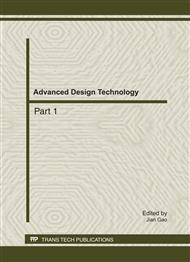p.41
p.47
p.53
p.58
p.62
p.67
p.72
p.77
p.83
Multi-Domain and Hybrid Behavioral Modeling for Complex Product Systems
Abstract:
The model of complex product systems involves mechanical, electrical, hydraulic, control, thermal and even aerodynamic domain. It also simultaneously includes discrete state behavior and continuous dynamic behavior. In order to support the development of complex product systems, in the paper, a behavioral modeling methodology considering multi-domain and hybrid behaviors is presented. The individual behavioral models are firstly developed and then the behavioral model of the system is composed by connecting the individual behavioral models. Some simple syntax and semantics is provided for supporting the construction of the behavioral models. In order to analyze performance of the systems, the behavioral model should be transformed to unified multi-domain model which is formulated in Modelica language. The mapping specifications including model declaration, hybrid behavioral modeling and model interface are presented.
Info:
Periodical:
Pages:
62-66
Citation:
Online since:
August 2011
Authors:
Keywords:
Price:
Сopyright:
© 2011 Trans Tech Publications Ltd. All Rights Reserved
Share:
Citation:


